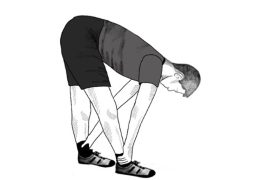In the contemporary fast-paced world, anxiety has emerged as a pervasive concern affecting millions of individuals globally. The daily stresses and pressures can significantly impact mental and physical well-being, potentially leading to anxiety-related disorders. Recognizing this, yoga, an ancient practice originating from India, has garnered widespread popularity as a holistic approach to alleviate anxiety and foster overall mental and physical wellness.
The combination of breath control, meditation, and physical postures in yoga offers a comprehensive and integrated method to manage stress, promote relaxation, and enhance mindfulness. As more people seek alternatives to conventional treatments, yoga has become a go-to practice for those aiming to find balance and calm in the midst of life’s challenges.
Yoga Asanas:
1. Child’s Pose (Balasana):
Kneel on the mat, sit back on your heels, and extend your arms forward with your forehead resting on the ground. This pose gently stretches the back, hips, and thighs, promoting relaxation and calming the mind.
2. Corpse Pose (Savasana):
Lie flat on your back with legs extended and arms by your sides, palms facing up. Close your eyes and focus on your breath. Savasana is a classic relaxation pose that helps release tension, reduce stress, and calm the nervous system.
3. Seated Forward Bend (Paschimottanasana):
Sit with legs extended, hinge at the hips, and reach towards your toes. This forward bend stretches the spine and hamstrings, promoting a sense of calmness and tranquility.
4. Legs Up the Wall (Viparita Karani):
Sit with your side against a wall and swing your legs up, resting them against the wall. This restorative pose helps improve circulation, reduce fatigue, and induces a state of deep relaxation.
5. Alternate Nostril Breathing (Nadi Shodhana):
Sit comfortably, use the right thumb to close off the right nostril, inhale through the left nostril, then close the left nostril with the ring finger, exhale through the right nostril. This pranayama technique helps balance the nervous system, bringing a sense of calm and balance to the mind.
These yoga asanas can be practiced individually or as part of a sequence to create a calming and grounding effect on the mind and body. Incorporate deep and mindful breathing to enhance the relaxation benefits of these poses.
Disclaimer:
The information contained in this article is for educational and informational purposes only and is not intended as a health advice. We would ask you to consult a qualified professional or medical expert to gain additional knowledge before you choose to consume any product or perform any exercise.








